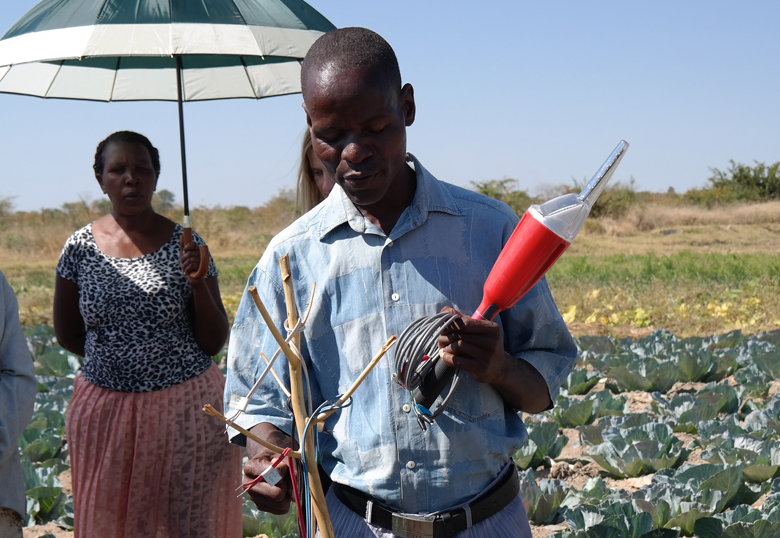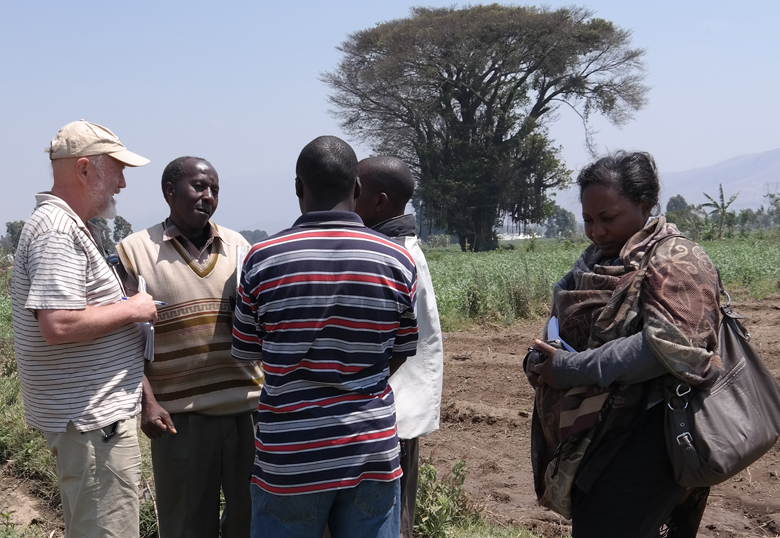More than 100 subsistence farmers in three African countries have increased their yields and irrigated less often through an agricultural research project designed by Dr. Henning Bjornlund, a University of Lethbridge visiting professor.
Bjornlund started the project in 2013 when he was the Canada Research Chair in Water Policy and Management at the U of L, a position he held from 2005 to 2014. He’s also a research professor of water policy and management at the University of South Australia in Adelaide.
“We are trying to increase water use efficiency and productivity by working with small-scale farmers,” says Bjornlund. “We give them soil moisture and nutrient monitoring tools that are installed in their fields. The farmers call them their eyes in the ground.”

The project, funded by the Australian Centre for International Agricultural Research (ACIAR), operates in close collaboration with partners in the African countries of Zimbabwe, Mozambique and Tanzania.
The tools tell the farmers about soil moisture at the root level and the level of nutrients available at different depths so they can better manage their water use and fertilizer application. The tools give farmers information that counteracts the common belief that it’s better to give plants more water.
“In reality, that’s not the case. You can give too much water, with the result that nutrients are leached past the root zone,” he says. “In 18 months, a lot of the farmers have halved the number of times they irrigate.”
Many of the farmers are women who have family obligations in addition to farming. Irrigating their crops is labour intensive because the farmer has to physically make sure water reaches all the plants in a field. Irrigating less frequently has given the farmers more time to do weed control or start other ventures to earn money for their families.
Research has shown that households with a diverse income stream are better off than those without. Many farmers have now been able to earn money in additional ways. One bought a small solar panel he used to create a cellphone charging station. Others have purchased motorbikes they use as taxis. Still others make charcoal, mud bricks or buns they sell in the marketplace.

Irrigation water typically flows through a canal that can be many kilometres in length. If water is scarce in a given year, farmers who live closer to the source will take out their share of water first, and those who live farther down the canal may have no water for their crops.
“You can have fist fights. That’s a common problem in those kinds of irrigation schemes,” he says. “We have found, in at least two of the schemes we are working on, that the level of conflict has decreased because reducing the number of times they irrigated left more water in the canal.”
Some of the farmers also commented there is less friction between husbands and wives because higher yields result in higher incomes.
“It has been interesting. You think you are doing something with using water more efficiently and it actually has an effect that you didn’t imagine,” says Bjornlund.
The soil monitoring tools have allowed the farmers to learn much more than just the level of moisture and nutrients in the soil. Farmers in one district saw a difference between using natural fertilizer, consisting of manure and compost, and using chemical fertilizers.
“It took much longer, when they used manure, before the nutrients disappeared,” he says. “The nutrients are attached to the straw and other things so it leaches slowly, whereas granulated fertilizer dissolves as soon as it gets wet.”
Increasing yields is only part of the project. If everyone has a bumper crop of tomatoes, prices can fall and transport costs can rise. The research project’s innovation platform brings together all the different stakeholders in a community, including input suppliers, farmers, buyers and processors, to help identify what would be most profitable for farmers to grow.
“We are working with the farmers to organize collaboration across the value chain,” he says.
Stakeholders have also looked at ways to add value to the crops they produce, through processing or warehouse facilities.
“It’s very interesting and very encouraging to be part of this project. These farmers are really standing up and telling you how much better their lives have become in a fairly short period of time,” he says. “One of the women told us she had sent her daughter to university, the first child ever in that village to go to university.”
The project is scheduled to wrap up in July, 2017 and negotiations are underway for a second phase that would be in effect until 2021.
